 |
ChessBase Reviews |
Last updated 2 August 2004

| index |
CDs, DVDs, Software Part 17
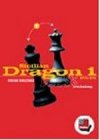
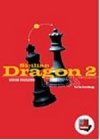
Sicilian Dragon 1 & Sicilian Dragon 2 By Dorian Rogozenko
Both these CDs are separate products dealing with different variations of the Sicilian Dragon. The Sicilian Dragon 1 deals with variations in the ELO Code range B70-B74, whilst The Sicilian Dragon 2 deals with variations in the ELO Code range B75-B79 (Rauzer (or Yugoslav) Attack,). In layman’s terms, Dragon 1 covers variations where White castles kingside and Dragon 2 covers variations where White castles queenside.
Dragon 1 has 29 texts and 113 annotated model games, a database with over 24,000 games, a training database and an opening tree containing all the games from the CD.
Dragon 2 has 95 texts and 500 annotated model games, a database with over 26,000 games, two training databases (one aimed from the Black perspective and one aimed from the White perspective) and an opening tree containing all the games from the CD.
The database surveys on both CDs are excellent, as are the annotations by the author. There is more than enough material on each of the CDs to satisfy the research and learning needs of the most dedicated correspondence player. In fact any player thinking of adding the Dragon to their repertoire or who expects to be faced with it can benefit from both of these CDs.
Both CDs include the ChessBase Reader so there is no need to own a copy of ChessBase or any of the other playing programs. System requirements are Pentium 166,32 MB RAM, Windows 98, ME, 2000, or XP. Here are some games from our players from the CDs:
Dragon 1: A P Borwell - B Green [B71] BCF-ch Sunderland (9), 1966
1.e4 c5 2.Nf3 d6 3.d4 cxd4 4.Nxd4 Nf6 5.Nc3 g6 6.f4 Nfd7 7.Bc4 Bg7 8.Be3
0-0 9.0-0 Nc6 10.a4 a6 11.Qd2 Na5 12.Bxf7+ Rxf7 13.Ne6 Qe8 14.Nc7 Qd8 15.Nxa8
Nc4 16.Qe2 Nxe3 17.Qxe3 b6 18.Nd5 e6 19.Ndxb6 Bb7 20.Nxd7 Qxd7 21.Nb6 Qc6
22.c3 a5 23.Rfd1 Bf6 24.b3 Qxc3 25.Qxc3 Bxc3 26.Rac1 Bb4 27.e5 d5 28.g3 Ba3
29.Rc2 Bb4 30.Nc8 Rd7 31.Rd4 Kg7 32.Nd6 Ba3 33.Nxb7 Rxb7 34.Rd3 Rb6 35.Rc7+
Kh6 36.g4 g5 37.f5 exf5 38.gxf5 g4 39.e6 Kg5 40.e7 Rb8 41.Rxd5 Kf4 42.Rc4+ 1-0
Dragon 2: D Kilgour - M Lecroq [B78] W-ch sf corr, 1995
1.e4 c5 2.Nf3 d6 3.d4 cxd4 4.Nxd4 Nf6 5.Nc3 g6 6.Be3 Bg7 7.f3 0-0 8.Qd2
Nc6 9.Bc4 Bd7 10.0-0-0 Rc8 11.Bb3 Ne5 12.h4 h5 13.Bh6 Qa5
14.Bxg7 Kxg715.Kb1 Rc5 16.Nde2 Rfc8 17.Rhe1 b5 18.Nf4 Qd8 19.Nd3 Nxd3 20.cxd3
b4 21.Ne2 Qb6 22.d4 Ra5 23.Rc1 Rxc1+ 24.Nxc1 Qb8 25.Nd3 Rb5 26.Ka1 e5 27.Bc4
Rb6 28.dxe5 dxe5 29.Rc1 Bc6 30.Qg5 Nd7 31.g4 f6 32.Qe3 hxg4 33.fxg4 Qd6 34.g5
Bb7 35.h5 gxh5 36.Rf1 Kf8 37.gxf6 Nxf6 38.Qg5 Bxe4 39.Nxe5 Ke8 40.Bb3 1-0
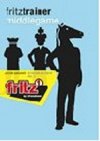
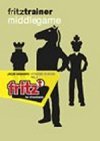
fritztrainer middlegame vol 1 & vol 2 By Jacob Aagaard
Attention: Please note that the courses on these CDs are a supplementary program for Fritz8 and can only be run if the chess program "Fritz8" or "Fritz8-WCh Edition" is installed on the PC. Neither Fritz8 nor Fritz8 WCh-Edition is supplied with this training course.
These CDs are based on the new instructional Fritz8-Chess Media System: all the lectures are presented in their entirety with video pictures and synchronised chess graphics. Basically when you run Fritz 8 you open the files for the Introduction or lectures from the CD and are presented with two windows to view.
The first is the standard board window where you can see the moves being played and any highlighted points such as attacked squares or pieces.
The second window presents a video in which the author gives a lecture on the subject under discussion. As he explains the ideas and moves you get to see these moves on the board simultaneously. This has to be one of the best tutorial systems on the market.
|
The subjects of the lectures on Vol 1 are as follows:
|
The subjects of the lectures on Vol 2 are as follows:
|
System requirements: PC 233, 64 MB RAM, CD-ROM drive, sound card, mouse, Windows 98, ME, 2000 or XP, Windows Media Player 9.
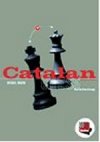
Catalan By Mihail Marin
This CD covers the Catalan Opening (1.d4 Nf6 2.c4 e6 3.g3). It contains a large collection of 27756 games of which 1438 are annotated.
538 of these are annotated by the author who is the Romanian chess champion who just has made a jump above the magic 2600 rating barrier.
With great precision and clarity, GM Marin has examined the individual variations. Once again, as was the case with the author’s first offering "English 1.c4 e5", one comes across a large number of indications of possible transpositions and related variations, sometimes from quite different openings. In this fashion, the learner obtains insights into a genuine grandmaster’s opening. The CD also has the usual training database and an opening tree.
System requirements: Pentium 166,32 MB RAM, Windows 98, ME, 2000, or XP. ChessBase Reader included, so once again there is no need to own a copy of ChessBase or any of the other playing programs.
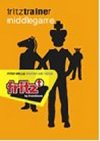
fritztrainer middlegame Strategy and Tactics By Peter Wells
Please note that the courses on these CDs are a supplementary program for Fritz8 and can only be run if the chess program "Fritz8" or "Fritz8-WCh Edition" is installed on the PC. Neither Fritz8 nor Fritz8 WCh-Edition is supplied with this training course.
This CD also uses the system described in the text for the previous two CDs. If ChessBase continue to produce such excellent tutorials in this format I would thoroughly recommend that players give serious thought to purchasing Fritz8 so that they can benefit from these CDs.
The following subjects are part of the lectures on this CD:
|
|
Another useful tip is to start your favourite analysis engine running in Fritz8 as you watch each lecture. This will allow you to compare what the author suggests against the engine analysis. All in all an excellent learning tool. System requirements: PC 233, 64 MB RAM, CD-ROM drive, sound card, mouse, Windows 98, ME, 2000 or XP, Windows Media Player 9.
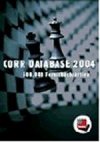
Corr Database 2004 By ChessBase
Corr Database 2004 is an extensive collection of correspondence games, featuring classical correspondence games played by mail as well as email games. The CD contains 500,000 games from 1804 until 2004 including all games of the correspondence chess world championships 1-16, correspondence chess Olympics 1-14, correspondence chess European championships 1-6, national championships (AUS, CSR, DEN, GER, NED, USA) and memorials (1965 SUI jub75, 1991 FIN jub30, NED jub 25, NBC Millennium Email und ICCF 50th Jubilee Elite). For the second time, Corr 2004 also features a correspondence chess playerbase, which includes about 60,000 names. A must for every player of correspondence chess! Requires ChessBase or Fritz Program.
System requirements: Pentium 166, 32 MB RAM, Windows 98, ME, 2000, or XP.